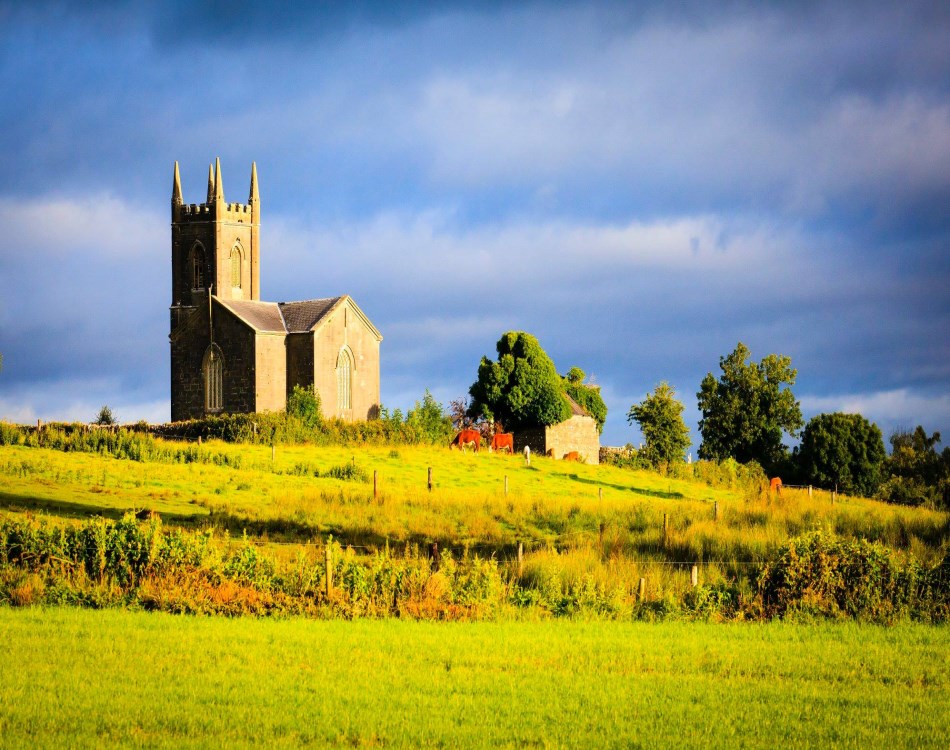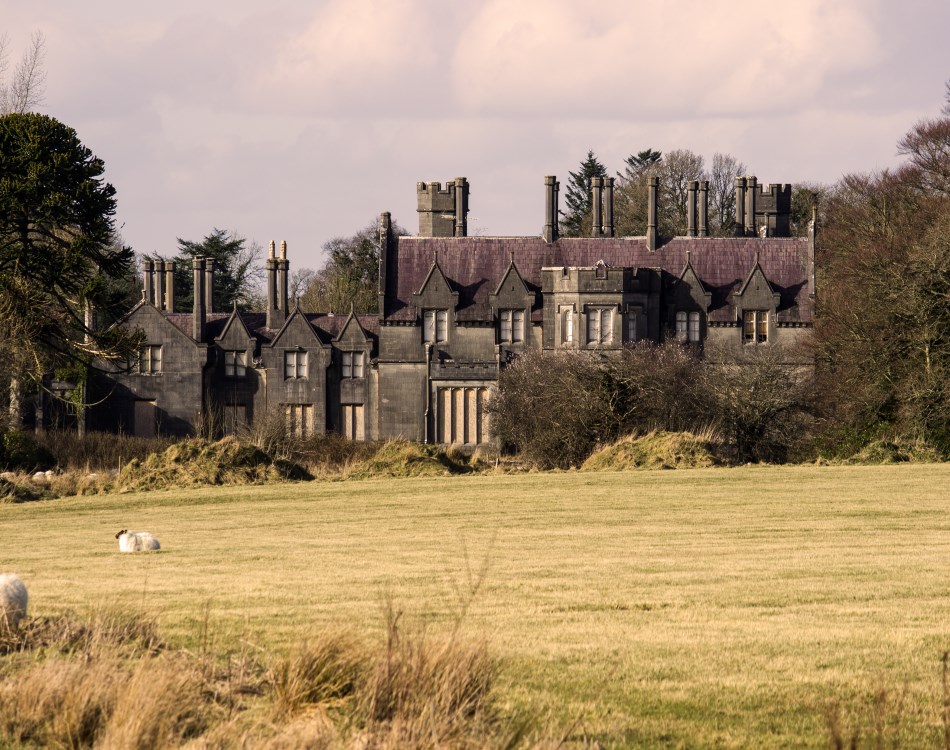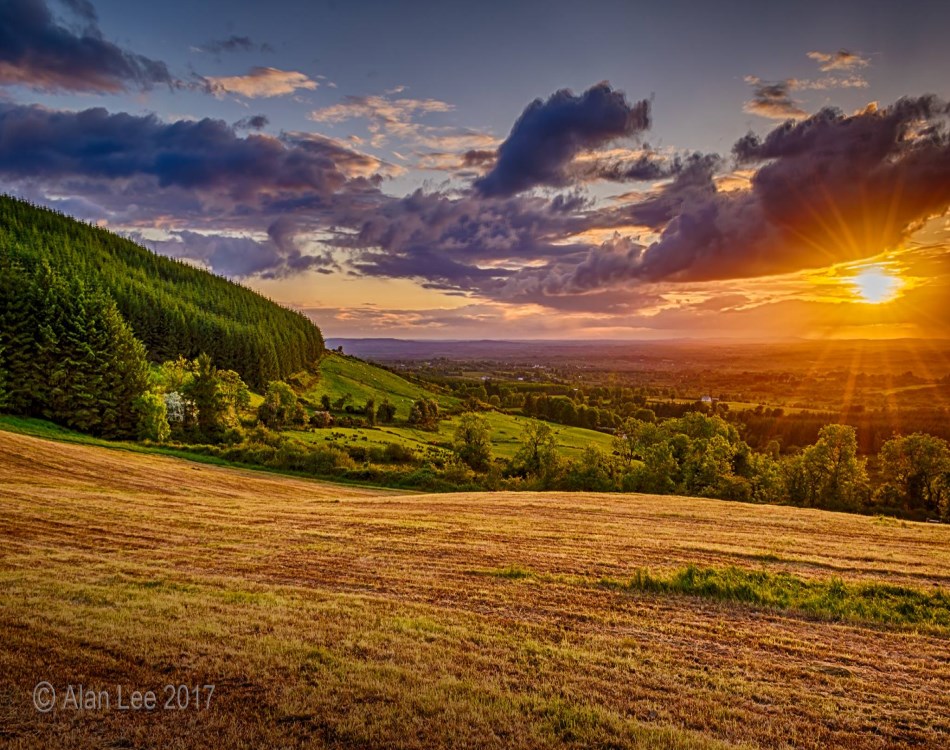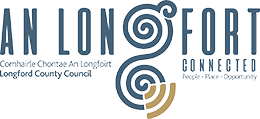Killoe

Killoe is situated about 10 kilometres north of Longford town and, as the largest parish in the county, is bordered by Newtownforbes, Drumlish, Ballinamuck, Ballinalee, Edgeworthstown and Longford. Killoe is a tranquil place with large areas of bogland of interest to the eco tourist. The highest point in County Longford, Corn Hill, lies within this area with magnificant views from both the Southern and South-Eastern slopes. Killoe is also home to the Tudor-Gothic style House, Carriglas Manor. This was built in 1837 as home to the LeFroy family.
History of Killoe
Historically, the parish of Killoe was much larger then at present. In the 1600s and 1700s areas as far away as Dromard, Ballinamuck and Newtownforbes fell in the Parish of Killoe. Two villages - Ennybegs and Cullyfad now lie within Killoe parish. St Patrick passed through Killoe when on his way from Granard to Magh Sleacht. Another alleged visitor to the area was Queen Maeve. In 1612 a survey carried out in the area of Clan Hugh corresponded to the area of Old Killoe. Many of the old names still appear on today’s maps, although some have disappeared. In those days Killoe consisted of nearly 40,000 acres and was divided between 16 larger estates and many smaller ones. The population in 1837 was around 16,500 people. During the famine Killoe lost many people - to hunger, the fever and emigration.
Carriglass Estate

Of the many estates in the area, Carrigglas Estate is the only working one remaining. Carriglass Manor was one of the only two Country seats in the county to remain in the hands of the family for which it was originally built up to recent times, the other being Castle forbes. The house was designed for The Lord Chief Justice of Ireland, Thomas Langlois Lefroy, in 1837. Daniel Robertson of Scotland designed Carriglass in the Tudor-Gothic Revival style, replacing a decrepit seventeenth-Century house. It was finished in 1840 and has remained substantially unaltered since that. James Gandon had previously designed the stables, farmyard and triumphal arch entrance between 1792 and 1804.
Gandon is Ireland’s greatest classicist, while Robertson is the undisputed master of the picturesque manor house; the contrast in their styles is instructive and enjoyable. Early in the c19, Thomas Lefroy, one of the most distinguished Lawyers of his time, who was called to the Irish bar in 1797, purchased The Carriglass estate and two years later married his heiress, Mary Paul, of Silver Spring in Co. Wexford. Lefroy became a bencher of the King’s Inn in 1841 and Lord Chief Justice of Ireland eleven years later. The success of his professional career, coupled perhaps with Mrs. Leffoy’s own wealth, provided the funds to rebuild carriglass house. The Lefroy family also had literary connections with Jane Austen, the novelist, as it is believed that she based the character of Mr. Darcy (in Pride and Prejudice) on Thomas Lefroy. Daniel Robertson, the Lefroys’ architect, did sometimes work in a vigorous and rather busy Roman manner, but the house at Carriglass, which has now added “Manor” to its name, was rebuilt in a free Elizabethan style which Robertson has made particularly his own. Unfortunately this extravagant house is no longer open to the public to visit as it is in private ownership now.
Additional History
There are several Ringforts in the Parish. During excavation of one of these located on the Ballinalee Road, bones and artifacts were recovered and the Fort itself was covered again.
One of the many old graveyards in Killoe parish is Killoe old graveyard at Killoe and Glebe, in the grounds of St. Catherines Church of Ireland church. This graveyard has been renovated by the Killoe Development Group and the graves indexed. A booklet which is available at local outlets has been published to allow people to more easily find the graves of their relatives and ancestors.
Things to See & Do in Killoe
Oghill Bog
Oghill Bog is 60 acres of cut-bog. It has never been cut by machine and has not been seriously touched for nearly 70 years. It has been left as it was and the process of regeneration has made a slow start. There is an abundance of new tree growth and there are large old heather plants. From certain angles, the old dome shape of the bog can be seen. Corn Hill overlooks this quiet area, abundant with wildlife and insect life. A comfortable 8 kilometre round walk over quiet country roads will give you a lovely relaxing few hours to discover this lovely bog.
Newtownbond Graveyard
There is an old graveyard located on the grounds of the old Newtownbond Estate just a few miles from Cullyfad village. There is a lovely quiet walking route, which takes you from the village, along tree-lined county roads to the estate where the old graveyard is located. Still visible are the ruins of an old church and the old graveyard. It is believed locally that there is also a famine graveyard in this area but it has yet to be confirmed.
Killoe Old Graveyard
Killoe Old Graveyard is situated beside St Catherine’s Church of Ireland Church and graveyard and the oldest grave in it dates back to the 1700s. The graveyard was badly neglected over the years but as genealogy is becoming more and more popular, the local development group got together and started a process of renovation. The graveyard was included in a local FÁS scheme and has been renovated to its present state. All the graves have been indexed for easy identification. A booklet with this index is available at local outlets.
Corn Hill

Corn Hill - photo by Alan Lee
Corn Hill stands on the northern side of the village of Killoe. From the summit can be seen lakes and rivers stretching over many neighbouring counties. There are several written accounts of cairns, dolmens and passage graves on the hill, but the exact positions are not known. These structures date back to 2500BC. This would indicate that this area was inhabited at the time of the building of the pyramids in Egypt!
It is the highest point in County Longford. The hill is 300 metres above sea level, and has a transmitter situated on the top which rises 100 metres above the peak of the hill.



